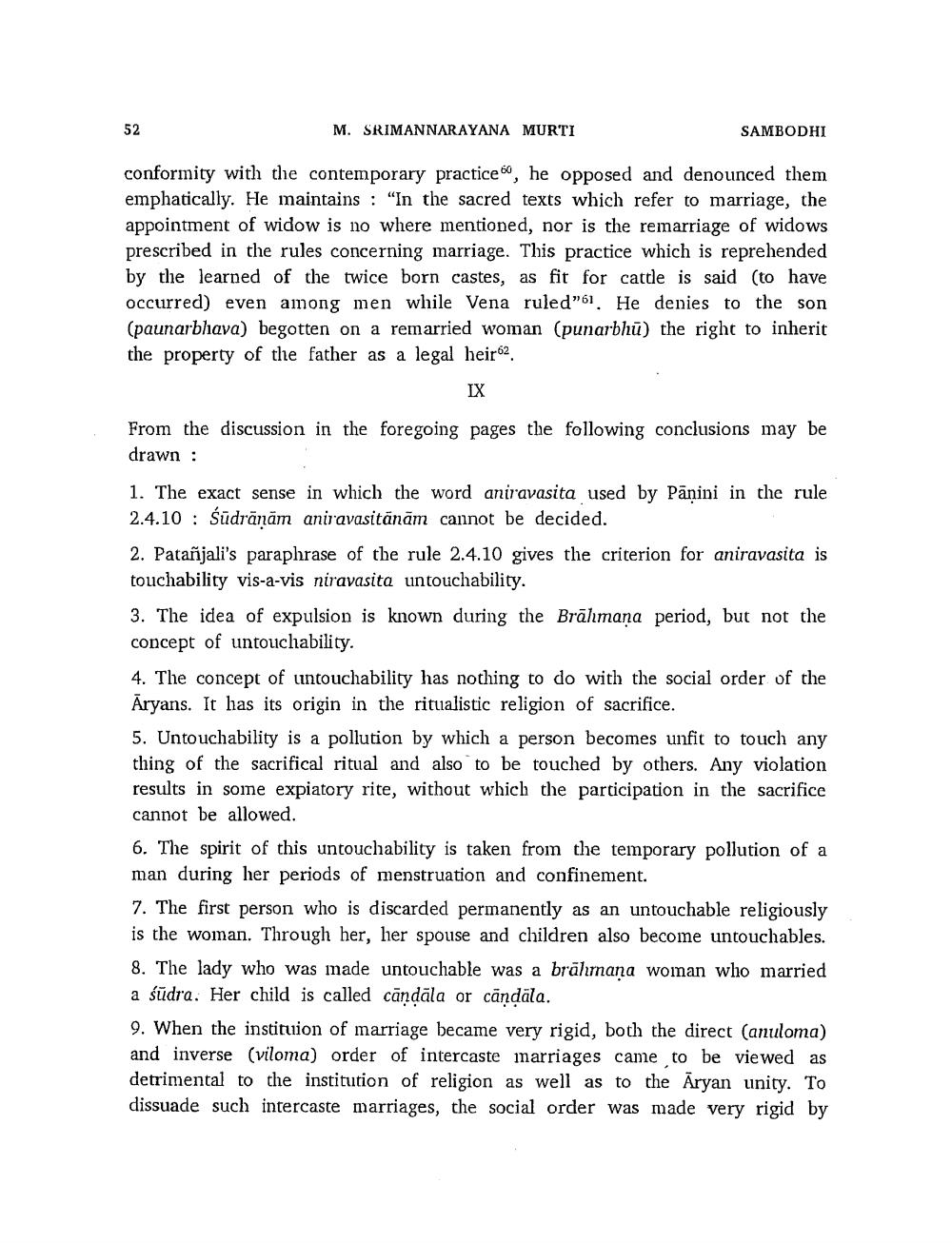________________
M. SRIMANNARAYANA MURTI
SAMBODHI
conformity with the contemporary practice 6, he opposed and denounced them emphatically. He maintains : "In the sacred texts which refer to marriage, the appointment of widow is no where mentioned, nor is the remarriage of widows prescribed in the rules concerning marriage. This practice which is reprehended by the learned of the twice born castes, as fit for cattle is said (to have occurred) even among men while Vena ruled"61. He denies to the son (paunarbhava) begotten on a remarried woman (punarblū) the right to inherit the property of the father as a legal heir62.
IX
From the discussion in the foregoing pages the following conclusions may be drawn :
1. The exact sense in which the word aniravasita used by Pāṇini in the rule 2.4.10 : Śūdrānām aniravasitānām cannot be decided. 2. Patañjali's paraphrase of the rule 2.4.10 gives the criterion for aniravasita is touchability vis-a-vis niravasita untouchability. 3. The idea of expulsion is known during the Brālımana period, but not the concept of untouchability. 4. The concept of untouchability has nothing to do with the social order of the Āryans. It has its origin in the ritualistic religion of sacrifice. 5. Untouchability is a pollution by which a person becomes unfit to touch any thing of the sacrifical ritual and also to be touched by others. Any violation results in some expiatory rite, without which the participation in the sacrifice cannot be allowed. 6. The spirit of this untouchability is taken from the temporary pollution of a man during her periods of menstruation and confinement. 7. The first person who is discarded permanently as an untouchable religiously is the woman. Through her, her spouse and children also become untouchables. 8. The lady who was made untouchable was a brāhmaṇa woman who married a südra. Her child is called cāņdāla or caņdäla. 9. When the instituion of marriage became very rigid, both the direct (anuloma) and inverse (viloma) order of intercaste marriages came to be viewed as detrimental to the institution of religion as well as to the Āryan unity. To dissuade such intercaste marriages, the social order was made very rigid by




